Six dedicated dads in the animal kingdom
Fatherhood in the animal kingdom is no easy feat. Some animal dads go to extraordinary lengths to ensure their offspring, mates, and even entire communities are well cared for. Here are six remarkable wildlife fathers and their unique parenting styles.
1. Marmosets: After-birth caregivers
In the world of marmosets, the task of caring for newborns surprisingly falls to the males. These diligent fathers lick and groom their young, giving the females time to recover from labor. Male marmosets are even present during birth, cleaning up the afterbirth and biting off the umbilical cord.
In the weeks following birth, these attentive dads feed the young and carry them on their backs until they are strong enough to venture independently. Contrary to the common myth that male animals are solely driven by the instinct to spread their genes, male marmosets remain steadfast with their families, demonstrating a remarkable level of commitment.
Conservation Status: Many species of marmosets are classified as vulnerable or near threatened, with the buffy-headed marmoset being critically endangered due to habitat loss from deforestation and fragmentation in the Amazon rainforest.
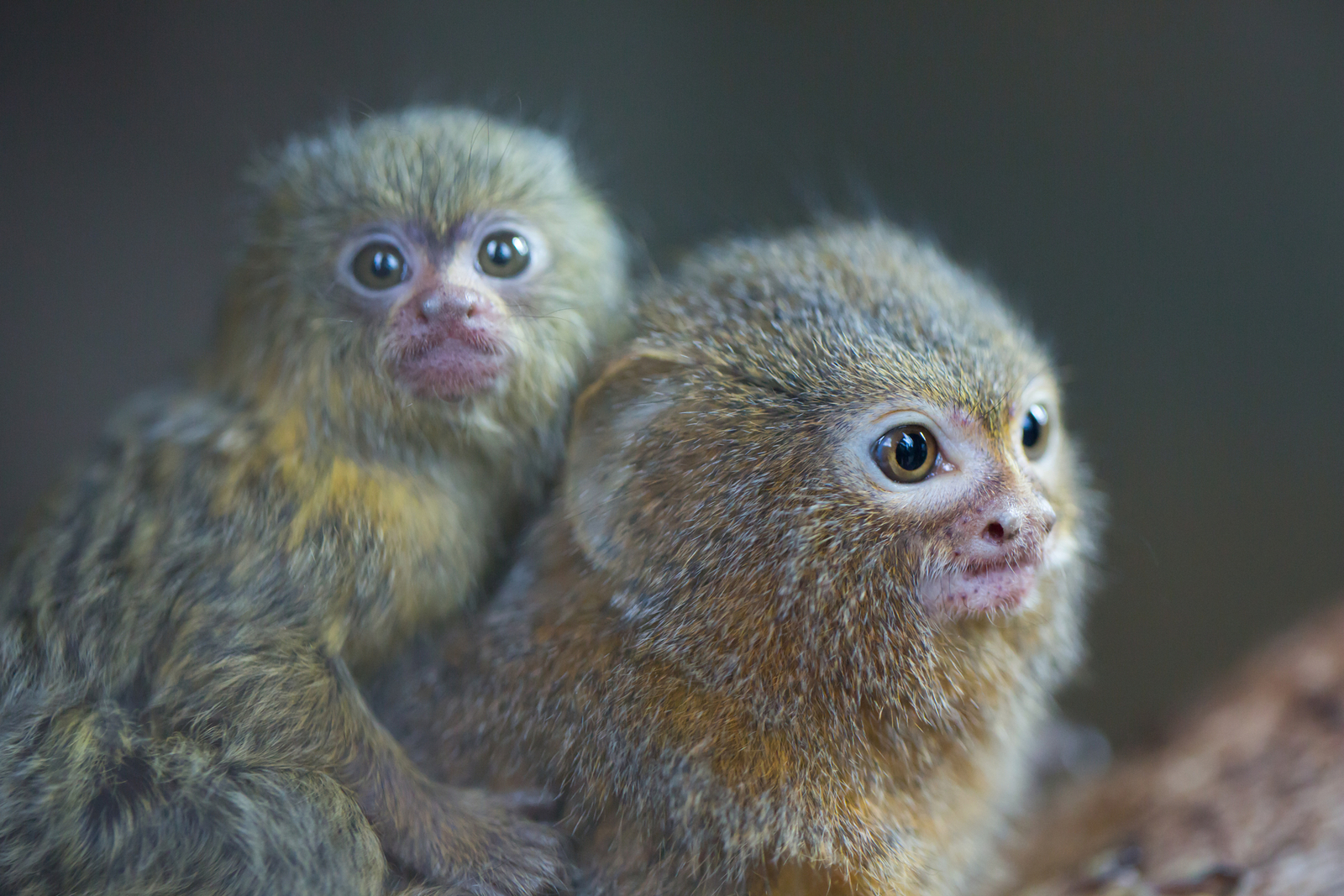
A pair of Pygmy marmosets (Cebuella), the smallest monkey in the world. Image credit: © Cusoncom | Dreamstime.
2. Barbary macaques: Communal parenting
Not to be outdone by their primate relatives, male Barbary macaques base their entire social status on their ability to care for the young. These devoted dads carry infants on their backs, using them as social currency to impress other members of their troop and build vital social networks.
Living in troops of about 30 members, the culture of Barbary macaques revolves around the babies born each spring. During this time, males will even pick up and carry offspring that aren't their own, showcasing their role as sought-after providers and reinforcing their status within the group. This communal parenting also enhances the safety of the troop’s young.
Conservation Status: Barbary macaques are endangered, primarily due to habitat degradation, illegal pet trade, and human encroachment in the North African mountains.

A young Barbary macaque (Macaca sylvanus) taking a ride on a male member of the troop. Image credit: Pixabay.
3. Brilliant-thighed poison frogs: Precise transporters
In the rainforest, brilliant-thighed poison frog fathers take on the meticulous task of transporting their offspring. After the eggs hatch, the male frog carefully shuttles the tadpoles on his back to precisely chosen puddles where they can safely develop.
The male's sharp memory allows him to keep track of multiple clutches of eggs and the locations of suitable puddles. Over the next few weeks, he frequently visits these sites to check on the eggs and ensure they are not drying out. As the tadpoles grow, they feed on vegetation and gradually metamorphose into juvenile frogs.
Conservation Status: Brilliant-thighed poison frog populations are stable, yet their biggest threats are deforestation and habitat destruction in their native Central and South American rainforests.

A brilliant-thighed poison frog (Allobates femoralis) dad carrying his tadpoles. Image credit: Leonardo Merçon, iNaturalist, UK.
4. Seahorses: The ultimate nurturers
In the ocean, seahorse dads are the epitome of parental dedication. These males take on the unique role of getting pregnant and brooding eggs in their specialized abdominal pouches. Females transfer their eggs into the male's pouch, where they fertilize and incubate them for about 24 days.
When the eggs hatch, the male seahorse continues to protect and nurture the young until they are ready to face the ocean on their own. Adding to their impressive resume, male seahorses are monogamous, forming lifelong bonds with their partners.
Conservation Status: Seahorse species like the White's seahorse and Knysna seahorse are endangered, but all seahorses face threats largely due to overfishing, habitat loss, and pollution affecting their coastal and marine environments.
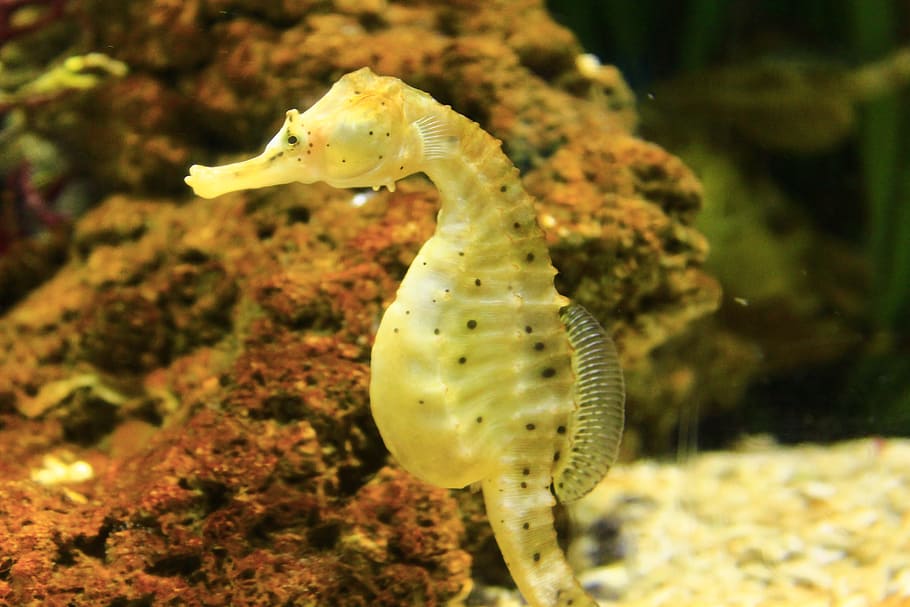
A pregnant male seahorse (Hippocampus). Image credit: PickPik.
5. Sandgrouses: Water bearers
Young sandgrouses, ground-dwelling birds that live in Namibia's arid deserts, don't have access to life's most essential resource, water. So, sandgrouse fathers come to the rescue by undertaking a grueling commute of almost 200 kilometers (125 miles) daily to ensure their family has something to drink.
Once at a pool, male sandgrouses rock back and forth to soak their belly feathers, which hold water in hairlike coils. This isn't any luxury dip in a pool. Filling up can take 15 minutes, exposing them to predators like swooping falcons. At the end of a long day of travel, the dads can provide their young with a few precious tablespoons of water that the chicks suck from their father's belly feathers.
Conservation Status: Most sandgrouse species populations are stable but face habitat degradation and desertification in their arid habitats across Africa and Asia.
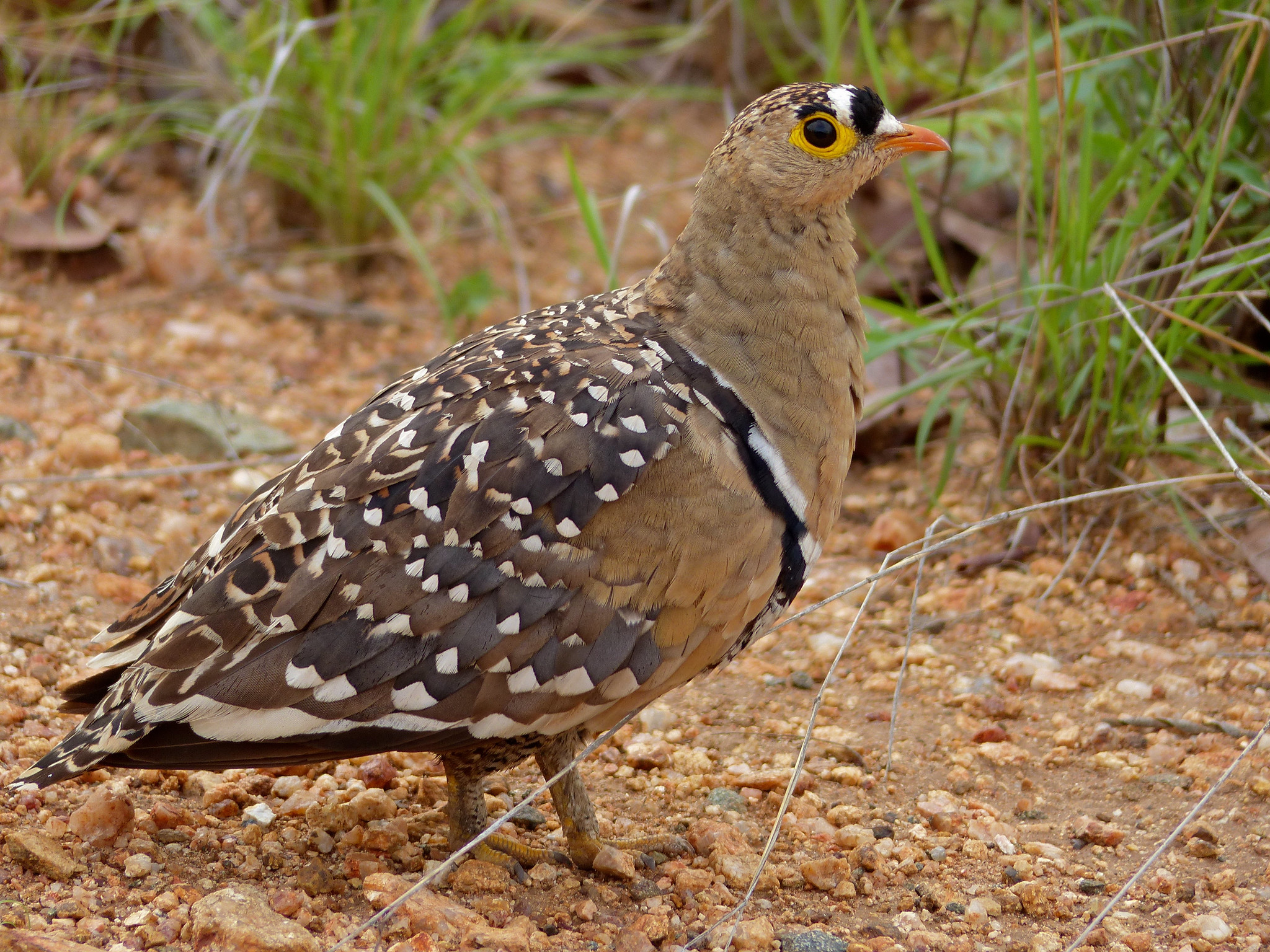
A male double-banded sandgrouse (Pterocles bicinctus). Image credit: Bernard Dupont, Wiki Creative Commons.
6. Penguins: Patience personified
In the harsh Antarctic climate, penguin dads play a crucial role in egg incubation. While the females head to sea to hunt, males take over the egg-sitting duties, fasting for weeks in the process. If the chick hatches before the mother's return, the father feeds it a curd-like substance he regurgitates.
Female penguins specifically seek out pudgy partners who can endure the long fasting period. They can gauge a male's fat reserves by listening to his mating call, which sounds like a cross between a donkey and a stalled car—the buffer the male, the steadier his call.
Conservation Status: Many penguin species face declining populations, with a few like the African penguin and northern rockhopper penguin classified as endangered, primarily due to climate change, overfishing, and pollution impacting their Antarctic and sub-Antarctic habitats.
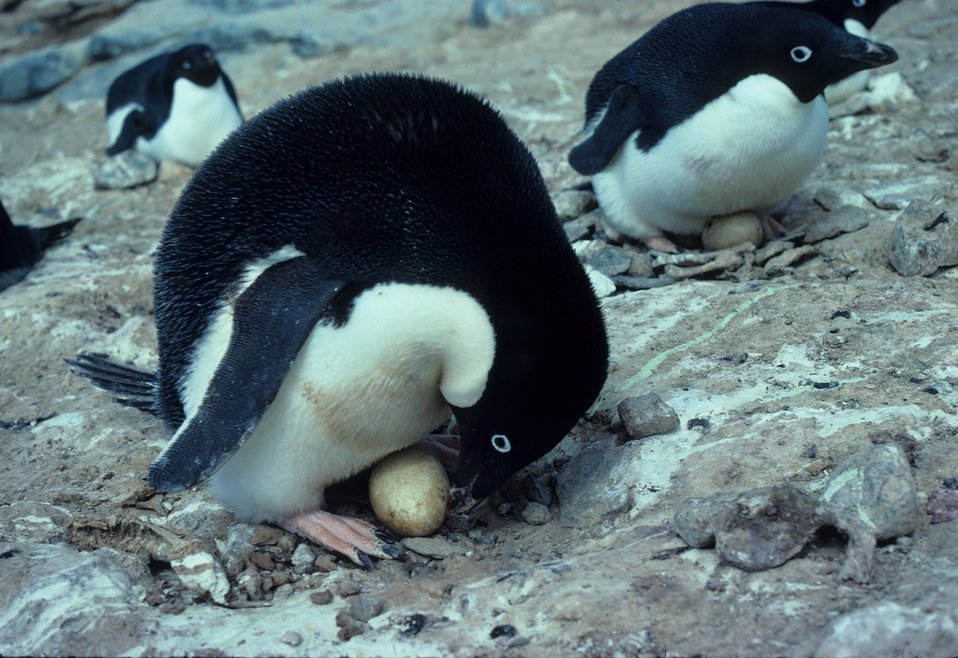
A male Adélie penguin (Pygoscelis adeliae) keeping watch over his egg. Image credit: Courtesy of Dr. Robert Ricker, NOAA/NOS/ORR.
These six fathers showcase extraordinary dedication and care, reminding us that the role of a father can be both diverse and profoundly impactful. Let's celebrate all the devoted dads, both human and animal, who go above and beyond to support their young.
Support Nature Conservation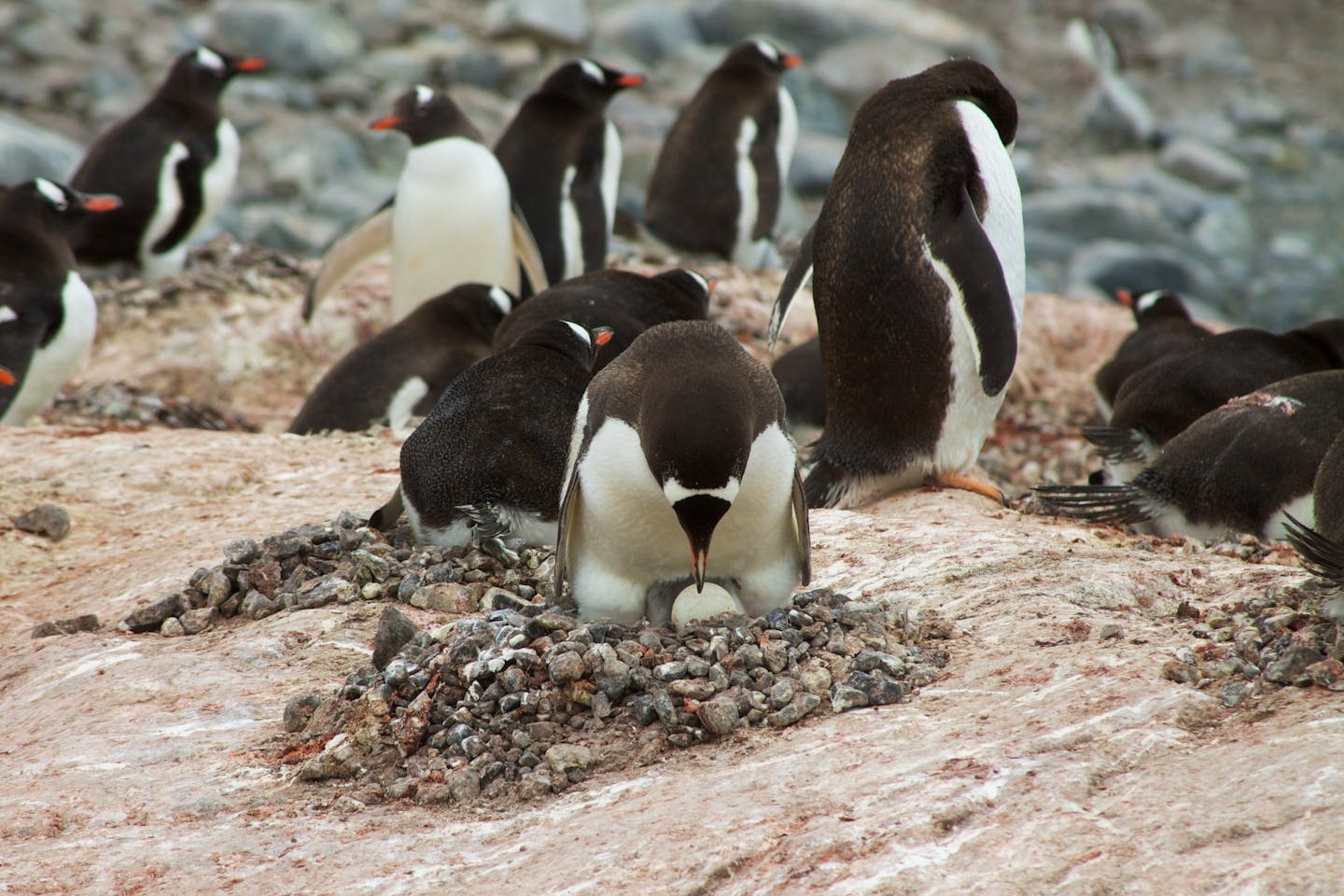

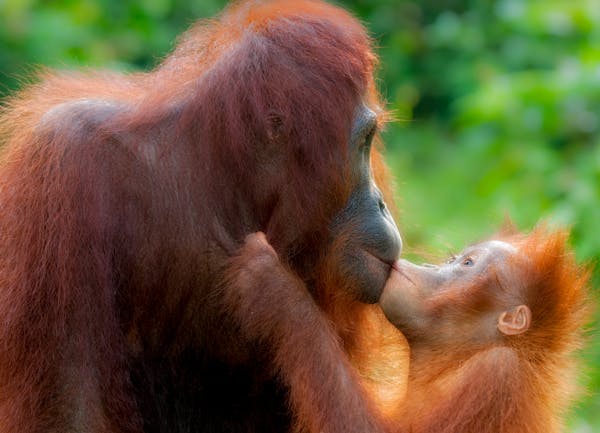
.jpg?auto=compress%2Cformat&h=600&w=600)
